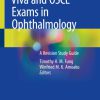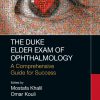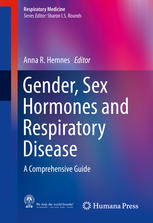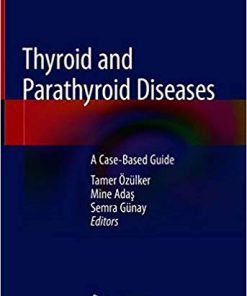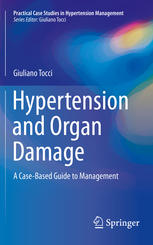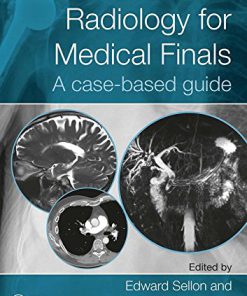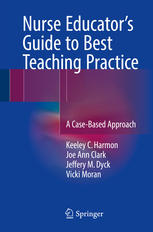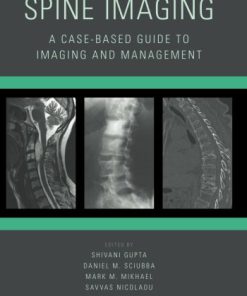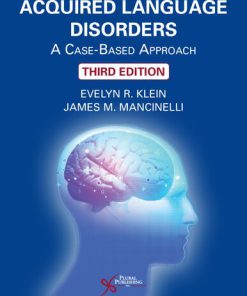Ocular Surface Disease A Case Based Guide 1st Edition by Ali Djalilian ISBN 9783319158235 3319158236
$50.00 Original price was: $50.00.$25.00Current price is: $25.00.
Ocular Surface Disease A Case-Based Guide 1st Edition by Ali Djalilian – Ebook PDF Instant Download/Delivery: 9783319158235 ,3319158236
Full download Ocular Surface Disease A Case-Based Guide 1st Edition after payment
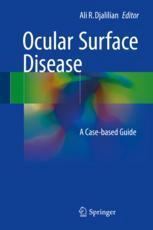
Product details:
ISBN 10: 3319158236
ISBN 13: 9783319158235
Author: Ali Djalilian
Ocular Surface Disease A Case-Based Guide 1st Edition Table of contents:
Chapter 1: Aqueous-Deficient Dry Eye Disease: Evaluation and Management
Case 1
What Additional Questions Do You Want to Ask This Patient to Further Understand the Possible Et
What Should You Look for on Physical Exam to Aid in Diagnosis of the Patient?
What Additional Ancillary Testing Would Be Appropriate?
What Treatment Should Be Initiated?
Case 2
What Are the Patient’s Risk Factors for Dry Eye Disease, and How Can These Be Addressed?
What Additional Treatments May Be Initiated?
Case 3
What Additional Treatment Options Might You Offer to This Patient?
References
Chapter 2: Update in the Diagnosis and Management of Meibomian Gland Dysfunction
Case 1
What Diagnosis Do These Findings Suggest?
How Do You Approach Symptoms of Dry Eye?
What Other Testing Should Be Performed?
What Newer Technologies Can Be Helpful in Evaluating and Quantifying Meibomian Gland Dysfunction
Looking at the Tear Film Interferometry Gives Part of the Picture, but Looking Directly at th
The Patient Reported Tearing with His Work. How Do You Evaluate This?
What Do You Recommend for This Patient?
How Are Patients Instructed To Do Hot Compresses? Is Eyelid Massage Recommended?
What Other Treatment Can Be Offered?
His Exam Is Unchanged After 4 weeks. What Additional Treatment Option Can You Offer?
What Are Blink Exercises?
Some Patients Do Not Respond to LipiFlow. What Else Can Be Offered If There Is Not Significant Me
Case 2
What Diagnosis Do These Findings Suggest?
What Additional Testing Is Helpful?
What Is Your Conclusion From These Additional Tests?
What Caused Her Meibomian Gland Atrophy?
Final Thoughts
What Is the Role of Eyelid Hygiene (Cleaning the Lids/Lashes) in Meibomian Gland Disease?
What Can Be Done About Demodex Infestation?
What Is the Role of Topical Corticosteroids in MGD?
References
Chapter 3: Image-Guided Evaluation and Monitoring of Treatment Response in Patients with Ocular
Introduction
Case 1
What Diagnosis Do These Symptoms Suggest?
What Are Your Next Diagnostic Steps?
What Diagnosis Do These Findings Suggest?
What Are Your MGD Treatment Recommendations?
Case 2
How Would You Proceed at This Stage?
What Are Your Next Diagnostic Steps?
What Are Your Treatment Recommendations?
Case 3
What Is Your Examination Approach to Chronic Dry Eye?
What Are Your Ocular Treatment Recommendations?
References
Chapter 4: Management of Ocular Surface Disease in Cataract and Refractive Surgery Patients
Introduction
Case 1
What Risks Does Cataract Surgery Pose to Individuals with OSD?
What Testing Should Be Performed to Evaluate This Patient’s OSD?
What Treatments Should Be Initiated in This Patient?
Before Cataract Surgery, What Preoperative Testing Should Be Performed in This Patient to Ensure
What Intraoperative Considerations Should Be Taken into Account in a Patient with a History o
What Postoperative Measures Will Promote Ocular Surface Health?
Case 2
For a Chronic CTL Wearer with CTL-Related Discomfort, What Preoperative Considerations Should Be
What Symptoms in This Patient Elevate Your Suspicion for Limbal Stem Cell Strain or Deficiency?
How Do You Diagnose OSD in a Chronic CTL Wearer?
How Do You Treat OSD in a Chronic CTL Wearer?
Once Treatment Has Been Initiated and the Limbal Stem Cell Deficiency Has Improved, What Preopera
Case 3
What Other Testing Should Be Performed on This Patient?
What Factors Likely Promote Dry Eye in This Patient?
How Should This Patient’s Dry Eye Be Managed?
How Should This Patient Be Counseled Regarding Eventual Cataract Surgery?
References
Chapter 5: Diagnosis and Management of Ocular Involvement in Sjögren’s Syndrome
Introduction
Case 1
What Are Your Initial Thoughts?
What Additional Questions Should You Ask?
What Components Are Important to Include on the Exam?
What Is Your Assessment? What Is the Ocular Staining Score (OSS) and How Is It Interpreted?
How Would You Manage the Patient at This Point?
What Is Your Assessment and What Are Your Next Steps?
What Are Your Next Management Steps?
Can You Have SS with Negative Bloodwork?
What Are the Current Classification Criteria for SS?
What Is the Role of Punctal Occlusion in SS?
What Are Other Treatment Options for This Patient?
Case 2
What Are Important Preoperative Considerations When Planning Cataract Surgery for Patients with S
What Role Do In-office Tests Such as MMP-9 Testing and Tear Osmolarity Play in Preoperative Surg
How Would You Change her Treatment Regimen Prior to Cataract Surgery Based on These Findings?
How Do You Manage Postoperative Cataract Patients with Severe Dry Eye and/or SS?
Case 3 [30]
What Is the Initial Approach to This Patient? What Diagnosis Do These Findings Suggest?
What Are Your Next Diagnostic Steps?
What Is the Pathophysiology of Corneal Melts in SS Patients?
What Is the Approach to Corneal Ulcerations with Corneal Perforation or Threatened Corneal Perfo
How Would Your Management Change at This Point?
References
Chapter 6: Diagnosis and Management of Ocular Graft-Versus-Host Disease
Case 1
What Is Your Examination Approach to Ocular GVHD?
Is There a Diagnostic Criterion for Chronic Ocular GVHD?
Can You Perform Any Other Tests to Determine If He Has Any Signs of Ocular Inflammation?
How Do These Laboratory Tests Help You in Counseling and Treating This Patient?
Case 2
Why Are Her Ocular Symptoms Asymmetric?
How Do You Treat This Patient, Given She Has Minimal Symptoms (OSDI = 2.08)?
What Is the Role of Autologous Serum Tears in the Management of Chronic Ocular GVHD?
Case 3
Why Did He Have Fluorescein Staining of the Superior Cornea?
Is SLK Seen in Chronic Ocular GVHD?
How Do You Treat SLK in Patients with Dry Eyes?
Why Does He Have LSCD in the Left Eye?
References
Chapter 7: Management of Ocular Surface Allergic Diseases
Case 1
What Is Seasonal Allergic Conjunctivitis, and How Does It Typically Present?
Is Any Further Diagnostic Testing Needed? How Would You Manage This Patient?
Case 2
What Is the Typical Clinical History of VKC? How Can the History Help to Differentiate Between
What Are Common Examination Findings in VKC? What Are the Long-Term Sequelae of VKC?
What Is the Pathophysiology of VKC? What Is Appropriate Medical Management for These Patients?
Case 3
Is There Any Further History You Would Like to Elicit from the child’s family? What Is the
What Is the Pathogenesis of a Shield Ulcer?
How Should Shield Ulcers Initially Be Managed?
What Are Some Other Treatment Options for Recalcitrant Shield Ulcers?
Case 4
What Is the Typical Clinical History of Patients with AKC? What Are Common Skin and Eyelid Find
How Does AKC Affect the Conjunctiva and Cornea? What Are Other Ocular Associations Seen in AKC?
What Is the Treatment Approach to AKC?
What Are Some Considerations When Planning Penetrating Keratoplasty in AKC Patients?
Summary
References
Chapter 8: Neuropathic Corneal Pain
Case 1: Corneal Neuropathy and Light Sensitivity (Photoallodynia)
What Is Causing Her Pain? Given the Normal Eye Exam, Could the Patient Be Malingering?
How Do We Approach This Patient?
What Is the Difference Between Peripheral vs. Central Neuropathic Pain? What Is the Proparacaine
What Can Aid in Definitive Diagnosis?
Case 2: Corneal Neuropathy After LASIK Surgery (Post-LASIK Neuralgia)
Which Patients Are Susceptible to Corneal Pain?
What Is the Social Impact of Corneal Pain?
What Should We Do Next for This Patient?
Case 3: Ocular Pain and Centralized Pain
Case 4: Corneal Neuropathy and Inflammation
Summary of the Management of Neuropathic Corneal Pain
Anti-inflammatory Agents
Neuro-regenerative Therapy
Protective Contact Lenses
Systemic Pharmacotherapy for Pain
Complementary and Alternative Medical Approaches
References
Chapter 9: Management of Glaucoma in Patients with Ocular Surface Disease
Case 1: Ocular Surface Toxicity/Allergy from Glaucoma Medications
What Diagnosis Do These Findings Suggest?
What Is the Basic Pathophysiology of the Ocular Surface Disease in the Setting of Glaucoma?
What Is the Next Step in the Management of This Patient?
What About the Long-Term Management of This Patient’s Glaucoma and OSD?
Case 2: Glaucoma Patient with Chronic Conjunctivitis and Scarring
What Is Your Diagnosis? What Else Do You Recommend?
How Was This Patient Managed?
Case 3: Glaucoma Surgery in the Limbal Transplant Patient
What Is the Pathophysiologic Basis for IOP Elevation in This Patient?
What Is the Treatment Plan for this Patient? What Are the Concerns When Proceeding to Treat Gla
Summary
References
Chapter 10: Comorbid Psychiatric and Inflammatory Conditions in Dry Eye Disease
Case #1: Ocular Surface Disease and Comorbid Psychiatric Conditions
What Do These Findings Mean?
How Often Does Depression Coexist with Dry Eye?
What Are the Treatment Options in Comorbid Psychiatric and Pain Disorders?
Pharmacologic Treatment
Nonpharmacological Therapies
What Is an Appropriate Management of This Patient?
Case #2: Aqueous Deficient Dry Eye in the Setting of Systemic Immune Disease
What Do These Findings Mean?
Tear Volume
Tear Film Stability
Epithelial Disruption
Osmolarity
Inflammation
What Further Evaluation Would You Consider for the Patient?
How Does Positive MMP Testing Affect Your Management of Patients with Ocular Surface Disease?
References
Chapter 11: Recognition and Management of Obstructive Sleep Apnea (OSA)-Related Eye Disease
Case 1: History
What Is Your Approach to Patients with Ocular Complaints of Irritation, Burning, Fluctuating Vis
At This Point, What Do You Conclude from the History and Exam?
Floppy Eyelid Syndrome and Sleep Apnea
What Is the Association Between Ocular Surface Disease, Sleep Apnea And Floppy (Lax) Eyelid Synd
What Are the Next Steps in the Management of This Patient?
What Were the Outcomes of the Management?
Summary and Conclusions
Case 2
Remembering the Mechanical and Ischemic Causes of Glaucoma, What Other Tests Might Be Helpful t
What Are the Next Steps in the Diagnosis and/or Management of This Patient?
Role of Vascular System in Glaucoma in Patients with OSAS
Perfusion Pressure (Blood Pressure: IOP)
Autonomic Dysfunction
Ischemia
Inflammation and Oxidative Stress
Hypercapnia
Role of IOP in OSAS and Glaucoma
What Are the Next Approaches to Therapy?
Summary and Conclusions
Case 3
What Are the Risk Factors for Branch Retinal Vein Occlusion?
What Is the Significance of Choroidal Thinning in This Patient?
What Are the Known Systemic and Ocular Diseases Associated with OSAS?
Summary and Conclusions
References
Chapter 12: Diagnosis and Management of Cicatricial Conjunctivitis
Case 1
What Is Your Examination Approach to Chronic, Intractable Ocular Surface Symptoms?
What Diagnosis Do These Findings Suggest? What Additional History Would This Exam Prompt You to O
What Are Your Next Diagnostic Steps?
In What Solution(S) Will You Deliver the Biopsy to Pathology? What Type of Pathologist Would Be
What Is the Most Likely Diagnosis?
What If the Immunofluorescence Results Had Been Equivocal?
What Is the Relationship Between Dry Eye Syndrome and OCP? Can She Stop Restasis? What About Re
When Will You Perform This Surgery? What Perioperative Changes to Systemic Therapy Will You Make
Case 2
What Additional Workup Would You Recommend? What Temporizing Measures Can You Offer While the Wo
What Are Your Systemic Treatment Recommendations? What Are Your Ocular Treatment Recommendations?
What Other Treatment Options Can You Offer Her? What Guidance Can You Give Her on Insurance Appe
What Are Potential Options for Visual Rehabilitation of the Right Cornea? What Are the Main Bar
Case 3
What Further History Is Required? What Serologic Studies (In Addition to the Standard Workup) Sho
What Information Will You Look for in the Body of the Report? Does It Matter Who Read the Bi
How Does This “Negative” Report Change Your Management? Is It Possible the Report Represented
How Will You Treat the Atopic Disease?
How Will You Address the Other Contributors to Inflammation Control (Meibomian Gland Dysfunction
Are There Are Other Ophthalmic Treatment Options? If These Fail And/Or Vision Is at Risk, Is There
What Is the Utility of Cyclosporine for OCP?
What About the Entropion? When Would You Recommend Treating This? What If the Patient Had OCP?
Summary
References
Chapter 13: Scleral Lenses in the Management of Ocular Surface Disease
Case 1
What Additional Therapeutic Measures Would You Consider for This Patient?
What Are the Key Components for Evaluating the Fit of a Scleral Lens or PROSE Device?
What Are Some Special Considerations with Scleral Lenses in Patients with Severe Ocular Surface
Discussion
Case 2
Given the Patient’s History of Corneal Ectasia, What Type of Optical Correction Would You Con
What Recommendations Would You Make for This Patient Based on His Dry Eye Symptoms and Clinical
If Further Intraocular Pressure Lowering Is Necessary, What Other Alternative Treatments Would You
What Other Therapies Are Available for the Management of Meibomian Gland Dysfunction?
Case 3
What Initial Treatment Do You Consider for a Patient with a Non-healing Epithelial Defect?
What Is the Role of PROSE Treatment in Patients with Persistent Epithelial Defects?
What Type of Follow Up Schedule Would You Recommend for This Patient?
References
Chapter 14: Recent Advances in Conjunctivochalasis
Case #1
Why Did This CCh Patient Complain of Tearing While There was Patent Nasolacrimal Drainage?
How Can One Measure Tear Clearance?
How Can One Treat CCh Patients with DTC?
What is the Pathogenesis of CCh?
What Will be the Next Step for Managing Symptomatic CCh After Inflammation Control?
Why Not Just Cut Off (Resect) or Cauterize the Redundant Conjunctiva?
What is the Clinical Significance if Repeat FCT Shows No Change in the Basal Wetting Length Afte
Case #2
How Can One Discern Whether CCh is the Cause of the Said Eye Irritation?
Why Are some CCh Patients Asymptomatic?
Case #3
Why Did This Patient Find No Relief from Conventional Eye Drops in Dry Eye Caused by CCh?
What Clinical Work Up Should You Perform to Discern Whether the Eye Suffered from ATD, CCh, or
Why Did FCT Show the Improvement of Basal Wetting Length After AMT in CCh?
Summary
References
Chapter 15: Management of the Persistent Corneal Epithelial Defect
Case #1
What Risk Factors Does She Have for Developing a Non-healing Epithelial Defect?
What Management Strategies Should Be Considered in This Situation?
Case #2
What Risk Factors Does She Have for Developing a Non-healing Epithelial Defect?
What Management Strategies Should Be Considered in This Situation?
What Is the Best Way to Use Prophylactic Antibiotics in Persistent Epithelial Defects?
Case #3
What Other Risk Factors Does He Have for Developing a Non-healing Epithelial Defect?
What Management Strategies Should Be Considered in This Situation?
Discussion
References
Chapter 16: Pediatric Ocular Surface Disease
Case 1
What Differential Diagnoses Do These Findings Suggest? What Additional History Would This Exam Prom
What Therapeutic Plan Would You Initiate for a Child of This Age Group?
Why Continue with Oral Erythromycin But Not Topical Ciprofloxacin?
What Concerns Would You Have About Long-Term Therapy?
Why Cyclosporine? What Is the Pediatric Experience?
What Oral Antibiotics Are Safe and Effective for Children with Ocular Surface Disease and Ocula
What Other Considerations/Treatment Approaches Would You Have if This Child Was Within the Ambly
What Would Be Your Next Therapeutic Approach to This Challenge?
What Is the Underlying Cause of This Type of Ocular Surface Inflammation?
Case 2
What Differential Diagnoses Do These Findings Suggest? What Additional History Would This Exam Prom
What Is the Most Likely Diagnosis? What Additional Workup Would You Obtain for the Patient’s
What are Your Next Steps in Management?
What Additional Systemic Workup Would You Recommend?
How Would You Plan for Further Long-Term Surgical Management of This Condition?
How Would You Manage This Situation?
What Are Your Long-Term Goals in Management for This Patient?
Case 3
What Is the Most Likely Diagnosis in This Child Given His Initial Presentation and Subsequent D
How Does Herpetic Eye Disease Manifest in Children as Compared to Adults?
How Would You Treat This patient’s Acute Episode?
What Special Considerations Must Be Made in Treating Herpetic Eye Disease in Children?
Return to Case
Would You Place This Patient on Chronic Antiviral Prophylaxis? If so, What Medications Would You
References
Chapter 17: Oculoplastics Considerations in Ocular Surface Disease
Case 1
What Were the Indications for Surgical Intervention at the Time of Referral?
What Is Your Preferred Method of Performing a Temporary Suture Tarsorrhaphy? What About a Perma
What Is the Role of a Symblepharon Ring in Fornix Reconstruction?
How Did You Manage Lower Eyelid Ectropion in the Presence of a Mucous Membrane Graft and Recu
Case 2
What Factors Require Consideration in Advance of Boston Type II K-Pro Surgery?
What Surgical Steps Were Involved in the Oculoplastics Portion of This Patient’s Boston Type I
How Was the Lower Eyelid Retraction and Type II K-Pro Device Exposure Managed?
Case 3
What Are Common Causes of Trichiasis and Distichiasis?
What Are Treatment Options for Trichiasis and Distichiasis?
What Are Common Causes of Eyelid Margin and Tarsal Conjunctival Keratinization? What Treatment Op
References
Chapter 18: Effective Use of Amniotic Membrane in Ocular Surface Disease
Case 1
What Is the Risk of Keratopathy in Patients Undergoing Radiation Treatment to the Eye/Orbit?
What Is Your Method for Gluing in Patients Presenting with a Corneal Perforation?
What Are Important Considerations in the Assessment of a Persistent Epithelial Defect?
What Is Your Approach for Treating Neurotrophic Keratopathy, Specifically in the Presence of a
Why Was a Dry Amniotic Membrane Graft Used in This Patient?
Case 2
How Is Your Management of Pterygium or Salzmann Nodular Degeneration Affected by Lens Status?
What Is Your Method of Choice for Surgical Excision of Pterygium? What About Salzmann Nodular D
Why Did You Choose a Wet Amniotic Membrane Graft in This Patient?
Case 3
How Did You Arrive at the Diagnosis of Ocular Rosacea?
What Is the Proposed Pathophysiology of Ocular Rosacea, and How Does This Shape Your Management
What Was the Role of Amniotic Membrane in This Case?
What Is Your Long-Term Management Plan for This Patient?
References
Chapter 19: Management of Limbal Stem Cell Deficiency
Case 1: Contact Lens-Induced Limbal Stem Cell Deficiency
What Is the Diagnosis?
What Causes LSCD in Contact Lens Wearers?
What Are the Characteristic Signs of LSCD in Contact Lens Wearers?
What Are the Medical Management Options of LSCD in Contact Lens Wearers?
What Are the Treatment Options for Recalcitrant Contact Lens-Induced LSCD?
What Are the Limbal Transplantation Options for Advanced CL-Induced LSCD?
Can a Patient with CL-Induced LSCD Go Back to Wearing Contact Lenses?
Case 2: Limbal Stem Cell Deficiency in Aniridia
Why Is This Patient Experiencing a Decline in Her Vision?
What Is Aniridic Keratopathy?
How Does PAX6 Mutation/Deletion Affect the Disease?
What are the Treatment Measures for AK?
How Does One Decide Which Surgical Procedure Is Most Appropriate for Advanced LSCD in Aniridia?
What Is the Surgical Technique for KLAL?
What Is the Current Immunosuppression Protocol in KLAL Patients?
What Is the Recommended Topical Therapy after KLAL?
What Are the Risks with Systemic Immunosuppression?
What Is the Best Way to Manage Co-existing Glaucoma in Aniridia Patients Undergoing Limbal Trans
What Factors Increase the Risk of Limbal Allograft Rejection?
How Does Rejection Manifest in a Patient after KLAL, and How Is It Treated?
How Long Does a Limbal Transplant (Donor Stem Cells) Survive?
What Are the Latest Trends in the Treatment of Aniridic Keratopathy?
Case 3: Limbal Stem Cell Deficiency in Chronic Stevens-Johnson Syndrome
What Are the Ocular Manifestations of Chronic Stevens-Johnson Syndrome?
Is It Possible to Limit the Progression of the Ocular Surface Disease in Chronic SJS?
What Is the Surgical Approach for Reconstructing the Ocular Surface in Chronic SJS?
Case 4: Simple Limbal Epithelial Transplantation
When Is the Best Time to Do Limbal Transplantation in a Patient with Chemical Injury?
What Are the Surgical Options in a Patient with Unilateral LSCD due to Chemical Injury?
What is SLET, and What Are Its Advantages over CLET?
How Do You Decide Between CLAU and SLET?
What Are Some Pearls for a Successful SLET Procedure?
What Are Some New Thoughts in the Management of Acute Chemical Injuries?
References
Chapter 20: Surgical Management of Pterygium
Case 1: Primary Pterygium
What Treatment Options Would You Recommend?
What Is Your Preferred Technique for Pterygium Excision?
How Much Fibrovascular Tissue Should Be Excised from Free Borders of Conjunctiva?
How and When Are Antifibrotic Agents Used?
What Is the Preferred Technique for Closing/Covering the Defect?
What Is the Postoperative Management of a Patient After Pterygium Surgery?
Case 2: Recurrent Pterygium
What Are the Important Issues That Must Be Considered When Planning Surgery for Recurrent Pteryg
How Do You Explain the Prognosis to the Patient?
What Is the Preferred Method for Anesthesia?
What Are the Key Steps in the Dissection of the Recurrent Pterygium?
How Should One Use Mitomycin C in Recurrent Pterygium Surgery?
What Is the Best Way to Cover the Conjunctival Defect?
Case 3: Impending Recurrence
What Does This Clinical Picture Represent and How Should It Be Managed?
Case 4: Poor Cosmesis
How Important Is Cosmesis in the Outcome of Pterygium Surgery?
What Are Some Strategies to Maximize the Cosmetic Outcome of Pterygium Surgery?
What Is a Suitable Plan for this Patient?
References
Chapter 21: Evaluation and Management of Acute Stevens-Johnson Syndrome
Case 1
When and How Should the Eyes Be Evaluated in Acute SJS/TEN?
How Do You Decide What Type of Amniotic Membrane to Use and How It Should Be Applied?
What Is the Follow-Up and Treatment Regimen Following Discharge from the Hospital?
Case 2
What Is Your Treatment Approach to This Patient?
How Would Your Management Change at This Stage?
What Surgical Technique Should Be Used? Where Should the Procedure Be Performed?
How Would You Proceed at This Stage?
What Is the Proper Timing of Amniotic Membrane Application?
What Is the Role of Systemic Steroids in Acute SJS/TEN?
Case 3
What Should the Initial Management Include?
What Ophthalmologic Treatment Would You Initiate Based on These Findings? If AMT Is Planned, How
What Should the Management Be Following AMT?
What Should the Management Be at This Point?
Why Did the Patient Develop Sequelae Even Though AMT Was Used Twice?
Summary
References
Chapter 22: The Use of Boston Keratoprosthesis in Severe Ocular Surface Disease
Case 1
What Treatment Options Would You Recommend?
What Are the Considerations for These Options?
What Risk Factors Did This Patient Have for Corneal Melting?
What Options Can Be Considered at This Time?
Case 2
What Are Management Options for the Patient at This Point?
What Other Options Are Available to Help Stabilize the Ocular Surface?
What Other Ocular Comorbidities Should Be Considered and Monitored in This Patient?
Case 3
How Can You Make This Patient a Better Candidate for KPro Implantation?
What Issues May Have Led to Her Stromal Melting and What Would You Do Next?
What Can Be Done to Help Stabilize Her Ocular Surface at This Point?
Conclusion
References
Chapter 23: Ocular Surface Reconstruction Using Cultivated Corneal and Oral Mucosal Epithelial Tran
Basic Concept and Indication of Cultivated Epithelial Sheet Transplantation
Cultivated Limbal Epithelial Transplantation (CLET) for Limbal Stem Cell Deficiency
Case 1: Treatment of Unilateral Stem Cell Deficiency with Auto-CLET
Case 2: Allogeneic Cultivated Limbal Epithelial Transplantation (Allo-CLET)
Major Complications of Allo-CLET and Associated Solutions
Persistent Epithelial Defect
Epithelial Rejection
Infection
Steroid-Induced Glaucoma
COMET for Severe Bilateral Ocular Surface Disease
Postoperative Medication
Case 3: COMET and Limbal Supported Hard Contact Lens for SJS
Case 4: Severe Bilateral Chemical Burn Treated with COMET and Delayed Lamellar Keratoplasty
Summary
References
Index
People also search for Ocular Surface Disease A Case-Based Guide 1st Edition:
twin cities ocular surface disease symposium
icd 10 code for ocular surface disease
what may be an underlying condition of ocular surface disease
can ocular surface disease be cured
Tags:
Ali Djalilian,Ocular Surface,Disease,Case Based
You may also like…
Medicine
Gender Sex Hormones and Respiratory Disease A Comprehensive Guide 1st Edition Anna R. Hemnes (Eds.)
Medicine
Hypertension and Organ Damage A Case Based Guide to Management 1st Edition Giuliano Tocci (Auth.)
Medicine - Radiology
Radiology for Medical Finals A Case-based Guide 1st Edition Edward 1351651439 9781351651431
Uncategorized
Medicine
Nurse Educator s Guide to Best Teaching Practice A Case Based Approach 1st Edition Keeley C. Harmon


